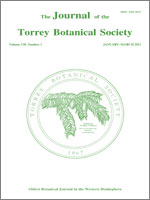The development of post-agricultural forests provides a unique opportunity to understand the mechanisms controlling plant community assembly. In particular, identifying traits associated with colonization can point to the causes of community development. The trait of association with the soil pH gradient has not yet been explored in this context. I test whether acidophilic species are more frequent in post-agricultural forests and discuss several possible explanations for this pattern. Species with low pH optima clearly tended to be more frequent in post-agricultural forests, yet the mean pH of post-agricultural forest soils did not differ from adjacent forests that had never been cleared. Calciphilic species nevertheless could remain absent from post-agricultural forests if they depended on high-pH microsites that agriculture had destroyed, or they could be less able to tolerate the lower nutrient status of post-agricultural forest soils. Alternatively, acidophilic species may have more effective dispersal. The abundance of acidophilic species in post-agricultural forests evidently warrants further investigation.
How to translate text using browser tools
1 January 2011
Why are acidophilic plants abundant in post-agricultural forests?
Kathryn M. Flinn
ACCESS THE FULL ARTICLE
Acidophile
calciphile
forest
land-use history
pH
soil acidity





